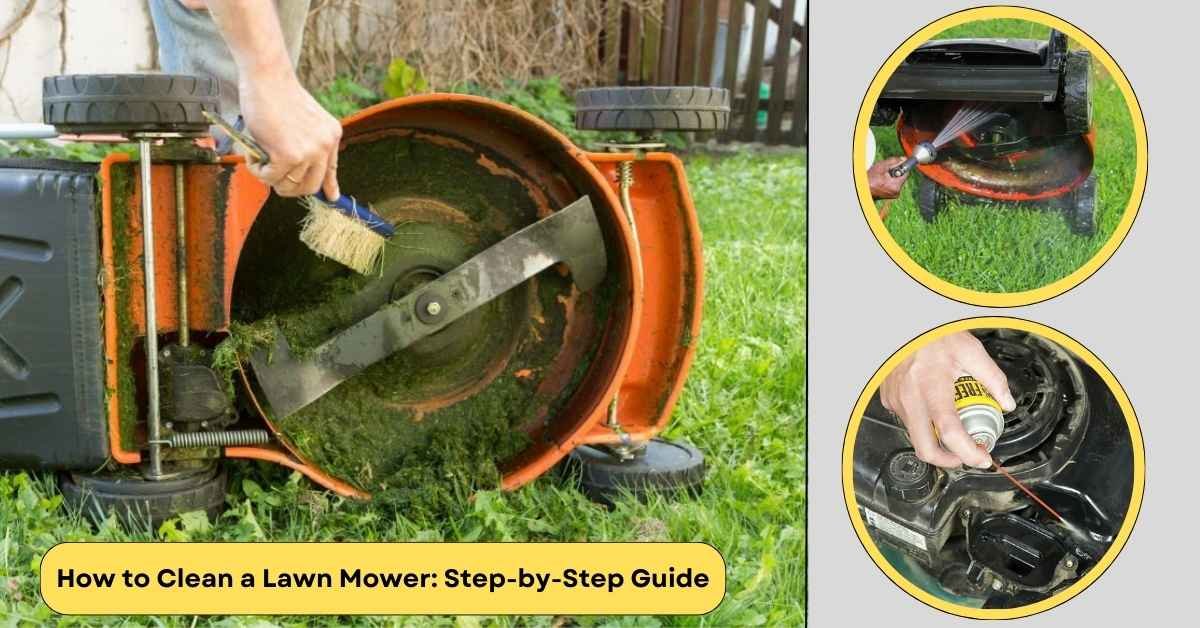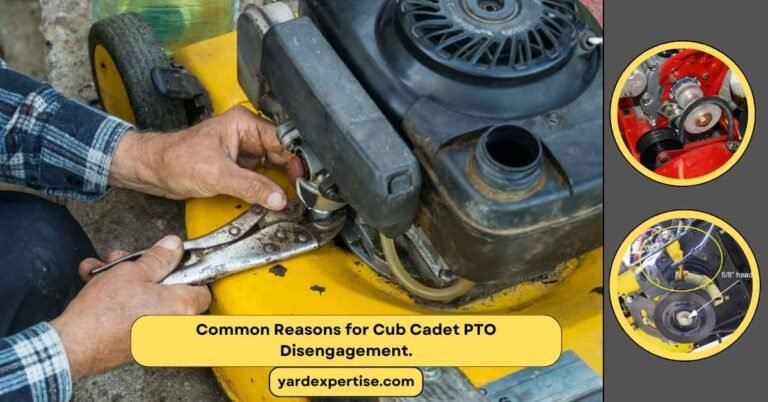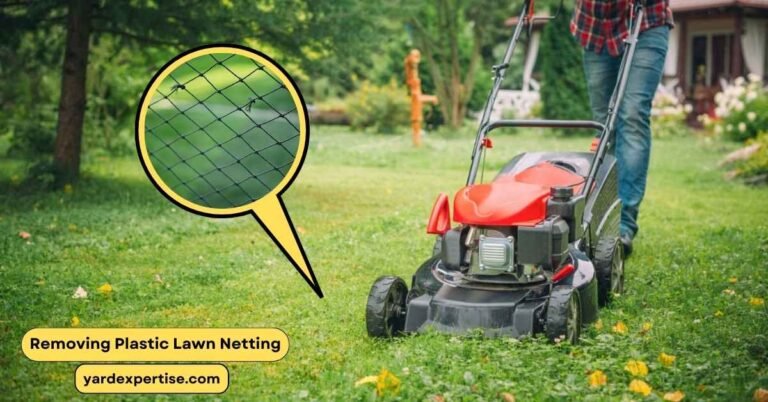How to Clean a Lawn Mower: Step by Step Guide

Lawn mowers are excellent pieces of gardening tools that lighten the workload of gardeners and homeowners all over the world by making the task of mowing the grass on their lawn easier. Push mowers, riding mowers, and electric mowers have made life more comfortable by making the task of keeping the yard neat and clean easy and fast.
But these efficient and amazing pieces of gardening and lawn care equipment need regular cleaning and maintenance by the user so that they can provide reliable service and last for a long time.
Anyone can easily clean both the exterior and the interior of their lawn mowers to ensure that the machine keeps functioning well without running into troubles because a well maintained machine lasts longer and provides much better performance than an unkept vehicle.
Cleaning the lawn mower is an easy task and just by following some guidelines and abiding by some safety procedures, you can ensure that your lawn mower stays neat and clean and functions well all throughout its service life.
Gathering Cleaning Supplies
You should gather a few supplies that are essential for the cleaning process such as, duster, scrapper, rag or cloth piece, buckets or bowls to collect oil, soap, water, and so on. You should also get protective equipment such as gloves, protective mask, eye protector and full sleeve clothes because dust can enter the eyes and the lungs and cause irritation and other physical problems.
Safety Precautions
Before starting the cleaning process, there are some safety precautions that you should follow.
- Disconnect the spark plug. This step is highly important as it makes sure that the lawn mower does not accidentally start during the cleaning process.
- Disconnect and remove the battery if it is an electric lawn mower.
- Always tilt the mower on its side with the air filter facing upwards to not damage the component.
- Use a wood block to keep the blades from rotating during the cleaning procedure. Make sure that the blade stays firmly in its place and does not wobble.
- Perform all the cleaning procedures on a flat and dry surface away from any heat source.
- Always handle gasoline with care to avoid spilling it.
- Always wear protective gloves, mask, and full sleeved clothes during the cleaning procedure.
Exterior Cleaning
Start with cleaning the exterior of your mower with a wire brush or duster. Scrape off the soil and grass clippings on the exterior of your vehicle. Rub off all the dust and dirt with a rag or a piece of cloth.
Use a damp cloth if the dust and dirt is sticking hard on the surface of your machine. Do not use a pressure washer to clean any part of the mower as water and air can get into the inside of the vehicle and cause it to malfunction.
Undercarriage Cleaning
Clean the underside of the deck after removing the blades carefully. Remove the blades by removing the screws first and then remove the blades. Use a wood block to hold the blades in place during the procedure. Remove the deck belt and the spindles as well if they get too dirty. Clean the underside of the deck with a rag or a piece of cloth.
Use a damp cloth if soil or dirt sticks to the surface. You can also use soap water for cleaning these parts. Keep all the loose screws and bolts in a secured place to avoid losing them and for easier assembly after being done with the cleaning process. Wash the spindles, pulleys, and the belt with a rag or a piece of clothes until they are fully clean.
Cleaning the Engine
To clean the engine of a lawn mower, first disconnect the spark plug and make sure that the engine is sufficiently cool. Remove the shroud or the engine screen and snap off the plastic blower housing. Remove the screws of bolts if the housing is metal.
Clean the cooling fans, the inside of the blower housing, and the flywheel fins with a small bristle brush. Apply a light solvent to the brush if you need to loosen stubborn grit. Remove all the debris around the cooling fans. Remove debris from the governor linkages, including the pneumatic governor vane. Check for debris around the brake assembly and clean around it to make sure that the brake cable and linkage move freely. Reattach the blower housing after you are done with the cleaning process.
You should also degrease your mower engine regularly to keep them in pristine condition. Turn off your engine and take out the spark plug and put the vehicle in a well ventilated area. Spray a degreasing agent liberally on greasy and dirt-encrusted surfaces of the engine. Wait 15 minutes and allow the degreaser to break down the grease and the dirt. Wipe away the residue carefully with a dry and clean cloth. Afterwards, hose the equipment surfaces and allow them to dry completely.
Air Filter Maintenance
Air filters function to supply clean air to the carburetor so that the carburetor can in turn supply this pure air and gasoline mixture to the engine manifold for combustion. When the air filters get clogged with dust, dirt, or carbon build up, the carburetor gets supplied with unclean air which hampers the regular function of the engine.
Clean the air filter regularly by opening the air filter panel which is usually located on the side of the vehicle. Take out the air filters and clean them with soft cloth. Clean the inner side of the air filter as well. Change the air filters as per the manufacturer’s recommendation on the user manual. Handle the air filters carefully to avoid tearing them.
Oil Change and Maintenance
After you have removed all the dirt and debris from the engine, you should check the oil level on your dipstick and change the oil. The oil level of the dipstick should be between the two holes on the dipstick. Avoid overfilling the engine with oil as that is just as bad as using old oil or running on low oil.
Identify the method of draining the oil on your lawn mower. This can be achieved through the dipstick tube, drain plug, or with an oil extractor tool. But the most common method is usually through the drain plug. Here are the steps to drain the oil.
Step 1: Run the lawn mower for about 15 minutes to warm up the oil. This process removes the dirty debris from the engine.
Step 2: Turn off the engine and disconnect the spark plug wire.
Step 3: Drain the gasoline through the drain valve and put a bowl or container below to catch the old gasoline.
Step 4: Insert the oil extractor tube and pump the oil out of the engine if you are using this method.
Step 5: Reinstall the drain plug and wipe out any oil that spilled on the exterior with a dry cloth.
Step 6: Pour in clean and fresh engine oil. Check the operator’s manual to determine the best oil for the engine of your mower. Check the oil level periodically while filling to avoid overfilling the tank. Insert the dipstick and make sure that the oil is at the correct level. Screw on the dipstick cap, put in new and fresh gasoline and reconnect the spark wire.
Spark Plug Inspection and Cleaning
Spark plug is one of the most vital components on a lawn mower as it provides the initial flicker that starts the combustion cycle in the engine. Spark plug needs to be routinely checked, cleaned, and adjusted as necessary to ensure that the mower functions well.
Disconnect the spark plug’s connection before starting any cleaning process. Take out the spark plug and inspect it thoroughly. Wipe the spark plug with a dry cloth If it has accumulated dust, dirt, or carbon on its surface.
Always keep the spark plug clean. Check the electrodes and make sure that there is no carbon build-up on them. Clean it with a dry cloth if there is any carbon build up. Check the gap between the electrodes and ensure that the gap has not become too widened or too narrow. Fix the electrodes accordingly.
Blade Care and Sharpening
Lawn mower blades perform the heavy duty of chopping and trimming grass to the desired level and this task not only makes the blades dirty with dirt, dust, and other debrid but also makes it dull. The steps to clean and sharpen the blades are discussed below.
Step 1: Turn off the mower’s engine and disconnect the spark plug.
Step 2: Put the mower on its side with the air filter facing upwards.
Step 3: Use a wood block to hold the blades in place and use a wrench to loosen the bolts that are keeping the blades mounted on the spindle.
Step 4: Keep the loose nuts, bolts and washer in a secure container to avoid losing them.
Step 5: Clean the blades with a wire brush or scraper to scrape off all the dust, dirt, soil, and other debris sticking to the blade. Use a dry cloth to finish the cleaning process.
Step 6: Sharpen the blades using a hand file, an angle grinder, or a bench grinder.
Step 7: Sharpen both sides of the blade and balance the blade by putting it on a small block of wood or metal.
Step 8: Reinstall the blades on the blade mount and tighten the screws.
Cleaning the Fuel System
Dust and debris can accumulate in the fuel lines as well that can hamper regular operation of the mower. To clean the fuel lines, disconnect the fuel lines from the connecting points.
Keep a small container or bowl under the opening of the tube to catch gasoline. Then use a tube cleaning brush to clean the inside of the fuel line. Reinstall the tubes after you are finished with the cleaning process.
Carburetor Cleaning
Carburetor needs to be cleaned regularly to ensure that it functions properly and supplies the correct amount of fuel and air mixture into the engine manifold. The steps to clean the carburetor in a mower are given below.
Step 1: Turn off the engine and disconnect the spark plug.
Step 2: Remove the air filter housing with a screwdriver.
Step 3: Remove the bolts that are holding the carburetor to the engine. Disconnect the throttle and choke linkage cables from the carburetor. Ensure that all of the screws and bolts that are getting disassembled are kept in a secured container.
Step 4: After you have disconnected the carburetor, put it in a bowl or a container and let all the gasoline inside the carburetor fall off it.
Step 5: Use carburetor cleaning sprays and a wire brush to clean all the parts of the carburetor carefully.
Step 6: Wipe everything thoroughly and then reassemble in the reverse order.
Cleaning the Wheels and Axles
The wheels and the axles get dust, dirt, debris, and grass clippings all over them while mowing the lawn and thus they should also be cleaned regularly. You can clean the wheels with a wire brush or a dry cloth.
Use a scraper If there is any soil or other debris sticking hard to the wheels and the axle of the mower. Take out the wheels by removing the screws, bolts, nuts, and washers that are keeping them mounted on the axle and clean around the wheel mount. Use a wire brush to get any grass clippings or other debris out of the narrow areas on the axle or the wheels.
Cleaning the Bag (Grass Catcher)
The grass catcher bag also needs regular cleaning as it gets dirty with grass clippings and soil getting stuck on the fabric. Here are the steps to clean the grass catcher or the chute bag.
Step 1: Turn off the engine, let it cool sufficiently, and disconnect the spark plug.
Step 2: Disconnect the grass bag by following the user manual.
Step 3: Empty all of the grass clippings and the leaves onto the ground. Shake the bag well to move all the clippings or leaves that are stuck to the bag’s surface.
Step 4: Turn the grass bag upside down on a flat surface and wash it using a leaf blower, an air compressor or by hand with a wire brush.
Step 5: Clean both sides of the bag thoroughly with soap water and wipe it clean with a dry cloth. Make sure to clean it thoroughly until there are no grass clippings, leaves, or soil stuck on the interior or the exterior part of the bag.
Reassembly and Final Checks
Reassemble all the parts of the mower in the reverse order of disassembling the mower parts. Keep the loose screws, bolts, nuts, and washer in a secure place and take pictures during disassembly to make the reassembling process easier. Connect the spark plug and start the engine.
Take it out for a test run to check if all the components are working as intended. Follow the user manual carefully during both the disassembling process and the reassembling process. Notice if the engine is staggering or if there are any performance issues like loss of power, excessive noise, excessive heating, blade failing to engage and disengage properly and so on.
How Often Should You Clean Your Lawn Mower
The frequency of cleaning your lawn mower depends on the usage. During peak months when it is being used more often, you should clean it thoroughly once a month. Clean the mower deck and the blades after every usage to avoid dust and debris sticking and jamming the blades. Clean the mower thoroughly before storing it for the winter season.
Is It Safe to Wash a Lawn Mower on Your Own?
Yes, it is completely safe to wash a lawn mower on your own if you follow all the safety procedures like turning off the engine and disconnecting the spark plug before starting the cleaning process, using protective gloves, mask, eye protector, and clothing. Handle all the components with care and caution.
How Much Does It Cost to Clean a Lawn Mower
The cost to clean a lawn mower is usually very low as the cleaning products can be bought very cheaply from local hardware stores. Taking the mower to a workshop to get professional help will cost somewhere between $100-$250.





